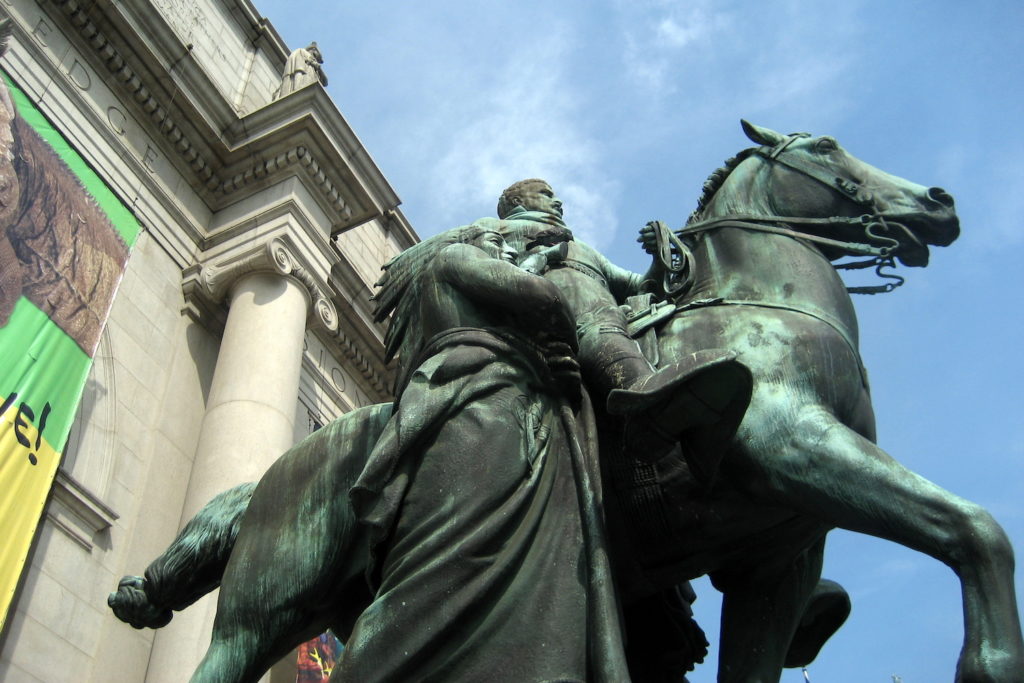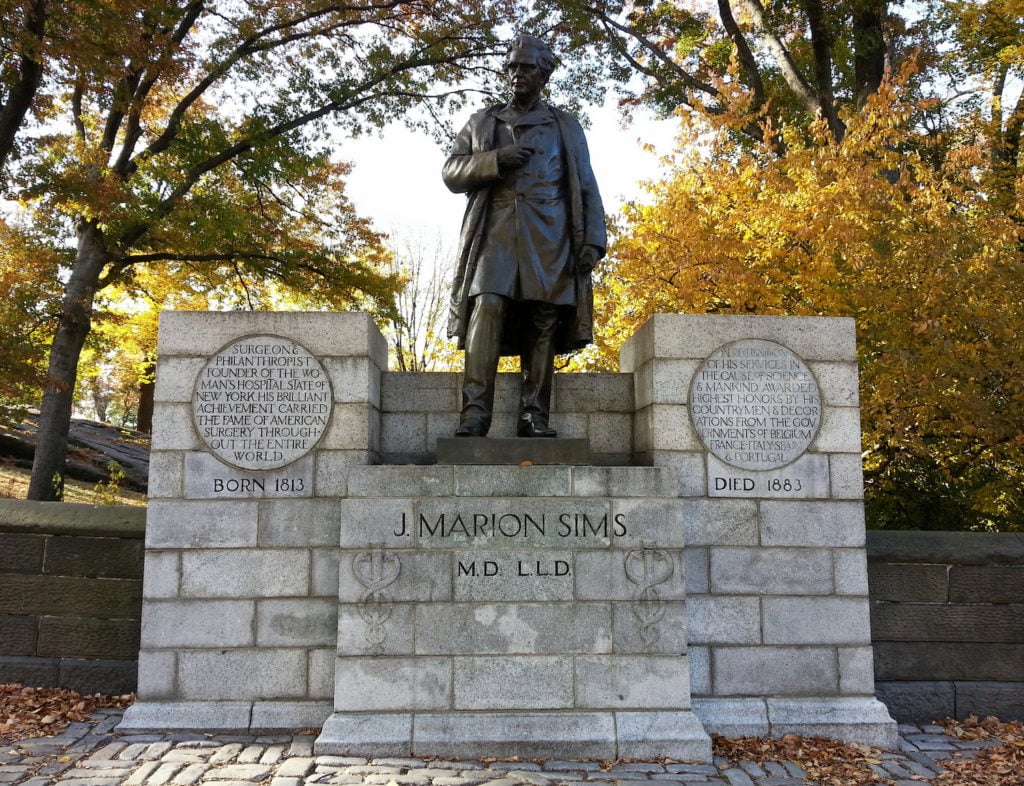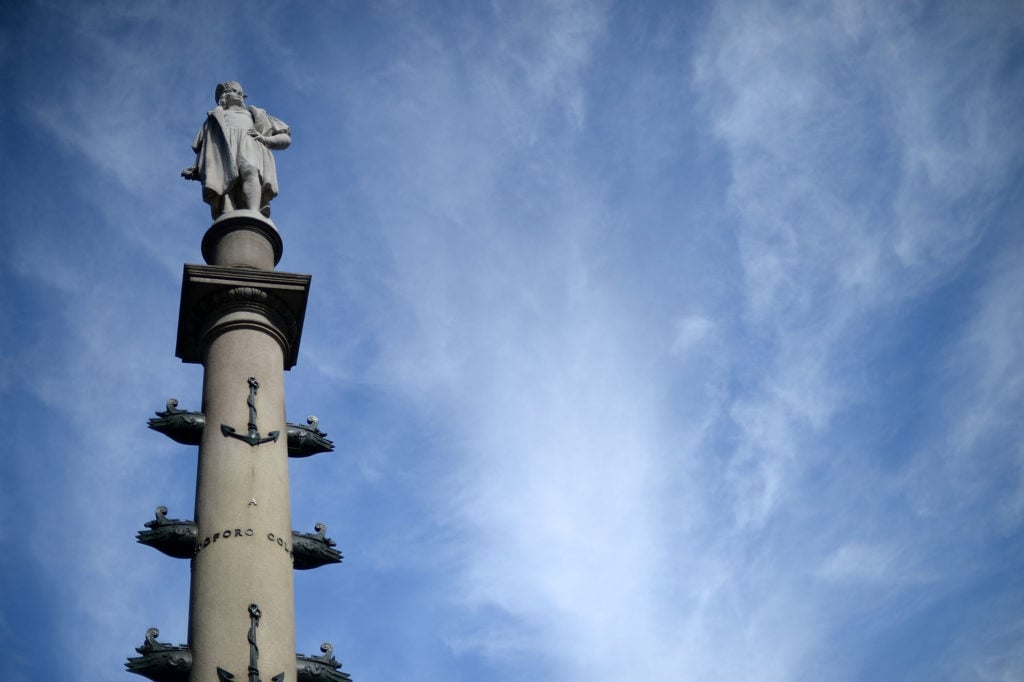Politics
NYC Decides Not to Tear Down Controversial Monuments—But Will Add Historical Markers Instead
One statue will be relocated and the city will commission a new monument for indigenous people.

One statue will be relocated and the city will commission a new monument for indigenous people.

by
Sarah Cascone

When it comes to tearing down controversial monuments, count New York City out.
After months of consideration and debate, the Mayoral Advisory Commission on City Art, Monuments, and Markers has decided that none of the city’s statues and monuments honoring polarizing historical figures, including Christopher Columbus and Teddy Roosevelt, will be taken down. Instead, they will be displayed alongside new plaques providing historical context. One particularly contested statue—that of 19th-century physician J. Marion Sims—will also be moved to a different location in the city.
“Reckoning with our collective histories is a complicated undertaking with no easy solution,” Mayor Bill de Blasio said in a statement. “Our approach will focus on adding detail and nuance to—instead of removing entirely—the representations of these histories.”
Moving forward, he added, “we’ll be taking a hard look at who has been left out and seeing where we can add new work to ensure our public spaces reflect the diversity and values of our great city.”

The city has opted to move the statue of Dr. James Marion Sims from East Harlem to Brooklyn’s Greenwood Cemetery, where Sims is buried. Photo courtesy of Matt Green of I’m Just Walking, via Flickr, Creative Commons.
Statues of divisive figures—such as 15th-century explorer Christopher Columbus, who enslaved Native Americans and subjected them to extreme violence, and J. Marion Sims, a pioneering gynecologist who experimented on enslaved black women—have become a point of contention in recent months. In September, De Blasio formed an advisory commission to help decide the future of the monuments and what he called “symbols of hate” on city property. Outside of New York, a similar controversy has swirled over Confederate monuments, with some cities like Baltimore ordering the removal of the statues.
New York’s commission held public hearings in each of the five boroughs in November, allowing residents to weigh in on the sensitive issue. It received thousands of responses to an in-person and online survey about the matter. The questionnaire suggested three possible solutions: “adding supplementary and educational materials like a plaque, relocating objects to another public or private space, or commissioning new public art either in response to an original or on its merit.”
In the end, the city has opted to combine all three approaches, according to the New York Times. (A detailed report of the commission’s activities can be found here.)
The statue of Sims, currently located in East Harlem, will be moved to his burial place, in Brooklyn’s Greenwood Cemetery. (Amid a groundswell of opposition, the Museum of the City of New York called in August for the statue’s removal.)

The statue of Christopher Columbus in the middle of Columbus Circle in New York City. Photo courtesy of Andrew H. Walker/Getty Images.
The statue of Columbus that stands tall over New York’s Columbus Circle “posed an enormous challenge to the commission,” according to the city’s report. A majority of the commission members advocated for keeping the original statue, in part due to its “importance as a symbol of pride for Italian Americans and others.”
They noted that immigrants had scrimped and saved to pay for the statue, erected at a time when the Ku Klux Klan was targeting Catholics—just a year after 11 Italian Americans had been lynched. In the end, the committee recommended that the statue remain, but that the city also commission a permanent monument dedicated to indigenous people and temporary artworks in response to the legacy represented by Columbus.
Even more divisive was the Teddy Roosevelt monument outside the American Museum of Natural History, which is flanked with cartoonish African and Native American figures. The mayor provided the tie-breaking vote when commission could not agree on its fate. Protesters targeted the artwork in October, splashing it with fake blood and calling it a symbol of “patriarchy, white supremacy and settler-colonialism.” But it will remain in place thanks to de Blasio—at least for now.
The decision to keep another monument intact is already causing some concern. Henri Philippe Petain, a Nazi collaborator, is named in one of 206 plaques in Lower Manhattan’s Canyon of Heroes, which commemorates every ticker tape parade in city history. In August, de Blasio had promised to remove the marker. The commission, however, recommended instead to rename the multi-site installation, believing that the choice was between keeping Petain’s plaque or removing all of them.
The commemoration for Nazi collaborator Philippe Pétain in the Canyon of Heroes will be one of the first we remove. https://t.co/hAnGmkCdtg
— Bill de Blasio (@NYCMayor) August 16, 2017
Not everyone agrees with the decision. “I thought we were progressive. Why not fight for the right thing and rip the damn thing out?” state assemblyman Dov Hikind told CBS.
“It is immoral to publicly display the names of Nazis,” he added, speaking to the AP. “We have a moral obligation to educate the public, and especially young people, by removing markers that commemorate individuals who willingly participated in the systematic murder of innocent men, women, and children.”